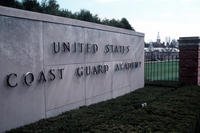Editor's Note: The DoD has released new information related to these incidents. Read about it here. Some information in this story has been updated to reflect these developments.
ORLANDO, Florida -- Russian pilots intercepted NATO aircraft multiple times last month even as officials say aerial provocations from Moscow seem to be winding down, the head of U.S. Air Forces in Europe and Africa said Thursday.
There were three incidents with Su-24 Fencer attack aircraft and another involving an Ilyushin Il-38, an anti-submarine warfare and maritime patrol aircraft, on Feb. 10, Gen. Tod Wolters told reporters at the Air Force Association's Air Warfare Symposium here.
The fly-bys were "not similar, and the concern on all four of them was the degree of closure and the final range to which the final aircraft approached the NATO entity," he said.
Wolters couldn't recall the particular aircraft affected, but said he was "pretty sure it was U.S."
"We provide information back to Russia when they do occur to make sure we can get an answer," he said. But from a "training perspective" the amount of interceptions "have plateaued."
Wolters added that USAFE officials have seen no additional interceptions since the Feb. 10 incidents.
"We continue to keep close watch. Each and every one of those engagements is different than the other," he said.
In December, then-Secretary of the Air Force Deborah Lee James said the Russian air force hadn't shown good faith toward NATO aircraft policing Baltic airspace, as it conducted a flurry of unsafe maneuvers and flybys last fall.
For example, the German air force, overseeing the Baltic Air Policing mission at the time, reported "more than 30 scrambles between the end of August and the start of November this year, intercepting Russian aircraft flying near civilian air routes with their transponders turned off," James said.
When asked if he believes incidents occur because of pilots' poor judgment or because Moscow is reacting to policies imposed by the West, Wolters said the issue stems largely from errors in judgment. But "I believe there's a little bit of both."
The Air Force is preparing for a busy few months as the theater ramps up training with NATO and partner allied countries.
"We anticipate in the areas of strike superiority, surveillance, rapid global mobility and command and control that we'll have a wide array of exercises here in the European region," Wolters previously told Military.com in November.
That means the service -- with help from National Guard and Reserve units -- will bring a number of different aircraft to the region, from intelligence and surveillance planes to fighters, bombers and airlifters.
RELATED: Air Crews Can Expect Busy Training Year in Europe: General
In addition, there may be more personnel rotations into the region as part of a theater security package, or TSP, of forward-deployed aircraft and units that conduct missions across the continent over six months to reassure Western allies.
Since Russia's annexation of Crimea in 2014, the Air Force has deployed aircraft, from F-15 Eagles to A-10 Thunderbolt ground-attack aircraft, as part of a regular rotation of assets.
Like Pacific Command, USAFE is expected to see an F-35 Joint Strike Fighter deployment this summer. "The F-35 itself is a game-changing resource," Wolters said.
USAFE has been using intelligence, surveillance and reconnaissance aircraft to keep an eye on movements between the Black Sea and the Baltic Sea, the general said Thursday.
"All of our issued, conventional ISR assets from MQ-1s to MQ-9s to RQ-4s are getting utilization from that vicinity from … Ukraine to the north" in Estonia, Lithuania and Latvia, Wolters said.
He would not specify how often the ISR platforms are being used.
Wolters said the Air Force's "biggest ace in the hole" on any front in the theater is the ability "to train and exercise at a very, very high and frequent level."
"That serves as a great deterrent," he said.
-- Oriana Pawlyk can be reached at oriana.pawlyk@military.com. Follow her on Twitter at @Oriana0214.
Related Video:
Two Minute Brief: US - Russia Relations































